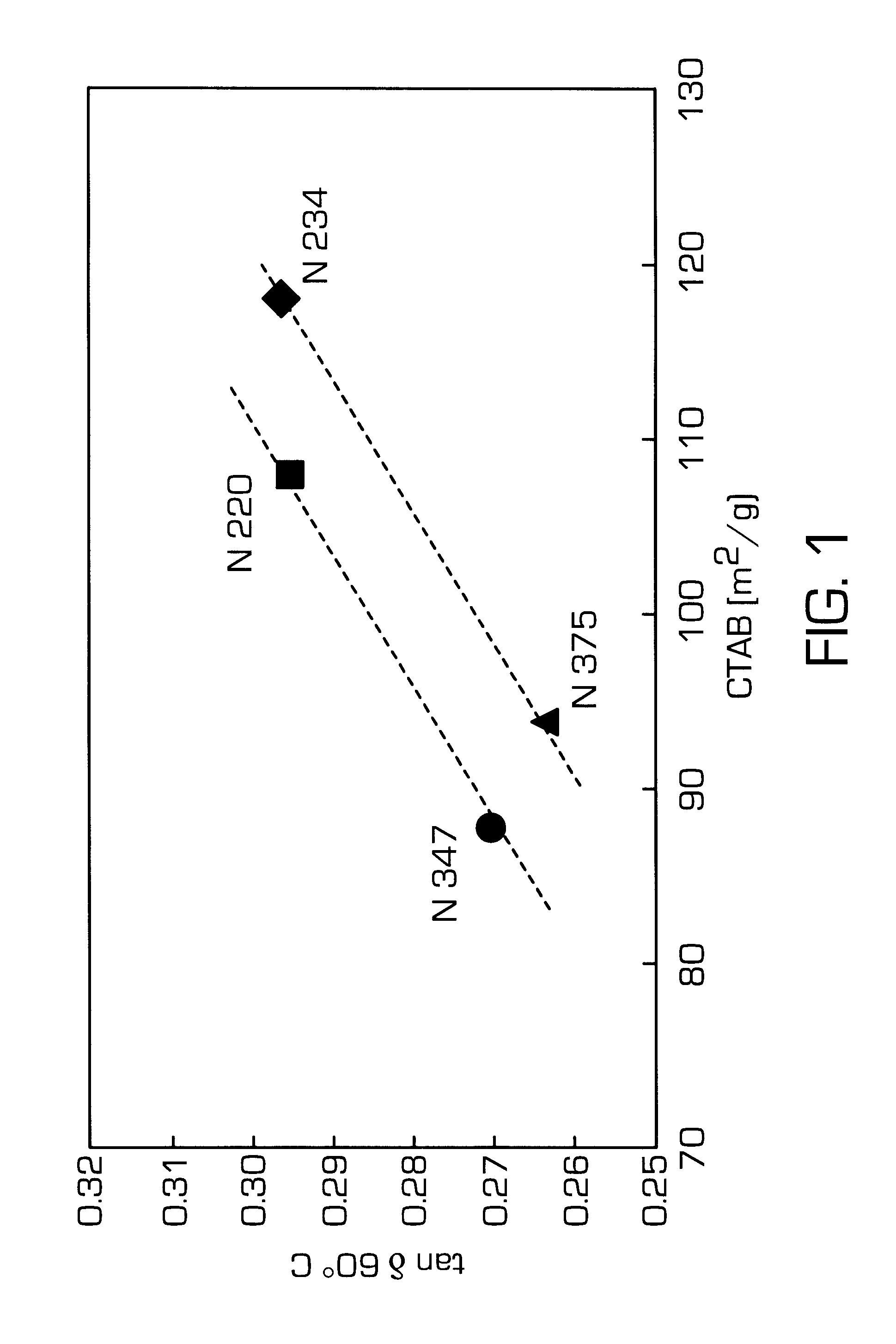Inversion carbon blacks and method for their manufacture
a carbon black and inversion technology, applied in the field of inversion carbon blacks and their manufacture, can solve the problems of significantly affecting the fuel consumption of trucks, the inability to straightforward transfer passenger tires with silica solution, and the inability to achieve the effect of reducing heat build-up, reducing hysteresis, and improving hysteresis
- Summary
- Abstract
- Description
- Claims
- Application Information
AI Technical Summary
Benefits of technology
Problems solved by technology
Method used
Image
Examples
examples 1 and 2
In the carbon black reactor represented in FIG. 15, a conventional inversion carbon black (Example 1) and an inversion carbon black according to the invention (Example 2) were manufactured.
The carbon black reactor 1 has a combustion chamber 2, in which the hot waste gas is generated for the pyrolysis of the carbon black oil by the combustion of the primary carbon black raw material with the addition of oxygen from air. The primary carbon black raw material is introduced through the axial burner lance 3 into the combustion chamber 2. The burner lance 3 can be shifted in the axial direction to optimize the nucleus-induced carbon black formation.
The addition of the combustion air occurs through the opening 4 in the front wall of the combustion chamber 2. The combustion chamber narrows conically toward the narrow section 5. After the reaction gas mixture has passed the narrow section, it expands in the reaction chamber 6.
A, B and C designate different positions for the injection of the ...
PUM
| Property | Measurement | Unit |
|---|---|---|
| Length | aaaaa | aaaaa |
| Length | aaaaa | aaaaa |
| Particle diameter | aaaaa | aaaaa |
Abstract
Description
Claims
Application Information
 Login to View More
Login to View More - R&D
- Intellectual Property
- Life Sciences
- Materials
- Tech Scout
- Unparalleled Data Quality
- Higher Quality Content
- 60% Fewer Hallucinations
Browse by: Latest US Patents, China's latest patents, Technical Efficacy Thesaurus, Application Domain, Technology Topic, Popular Technical Reports.
© 2025 PatSnap. All rights reserved.Legal|Privacy policy|Modern Slavery Act Transparency Statement|Sitemap|About US| Contact US: help@patsnap.com

